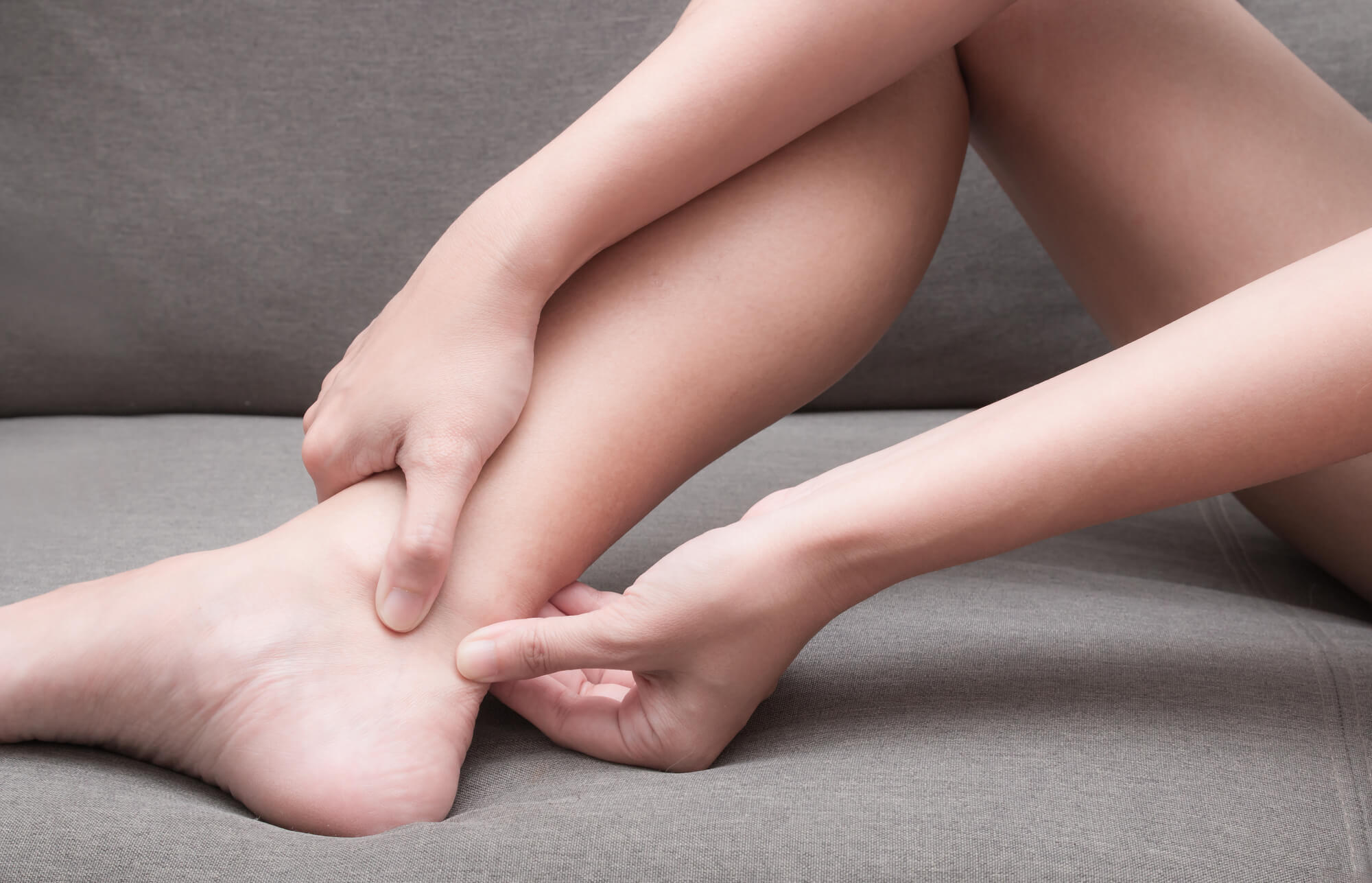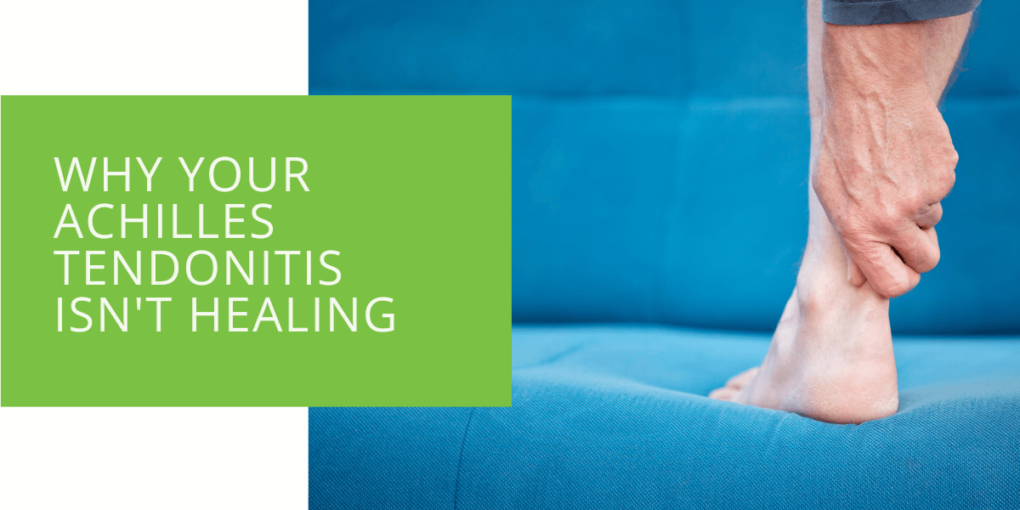Why Your Achilles Tendonitis Isn’t Healing: Causes and Solutions
Achilles tendonitis is a common and frustrating condition affecting anyone, from athletes to everyday individuals. It's a painful injury that can significantly impact one's ability to move and perform daily activities. Unfortunately, many people struggle with healing the condition, which can cause significant stress and frustration.
However, there is hope. With the right techniques and solutions, Achilles tendonitis can heal properly, allowing you to regain mobility and daily comfort. In this comprehensive guide, we will delve deep into why Achilles tendonitis is not healing and provide effective solutions to address this persistent issue. By following the tips, advice, and techniques outlined in this guide, you can get on the road to recovery and finally overcome Achilles tendonitis for good.
Key Takeaways
- Achilles tendonitis can be a persistent and painful condition, but understanding its causes, including overuse and delayed treatment, is essential for effective healing.
- Treatment options for non-healing Achilles tendonitis include conservative measures like rest and physical therapy, custom orthotics, medications, and even surgery for severe cases.
- Preventing Achilles tendon injuries through proper footwear, gradual physical activity, warm-up and cool-down routines, and proactive measures is crucial. Seeking professional help early can lead to better outcomes in managing Achilles tendonitis.
Unveiling Achilles Tendonitis
The Achilles tendon, the strongest in the body, plays a critical role in our mobility. It connects the calf muscles to the heel bone and allows us to perform various activities. Achilles tendonitis, also known as Achilles tendinitis, occurs when this crucial tendon becomes inflamed. It's characterized by pain and stiffness in the back of the heel, making it a common condition among those who engage in repetitive activities or overuse their calf muscles.
The Achilles tendon is a marvel of human anatomy, but its strength doesn't make it impervious to injury. When inflamed, it can lead to Achilles tendonitis, a condition affecting people of all ages and activity levels. The pain and stiffness in the heel area can range from mild to severe, often causing discomfort with every step you take.
The Agonizing Achilles: Common Symptoms
Achilles tendonitis typically presents with a range of symptoms:
- Persistent heel pain, especially in the morning or after prolonged periods of inactivity.
- Tenderness and swelling near the Achilles tendon.
- Reduced range of motion in the ankle joint.
- Gradual onset of symptoms, often worsening over time.
Understanding the symptoms of Achilles tendonitis is essential for early recognition and treatment. The persistent heel pain, especially when getting out of bed in the morning, can be excruciating. Tenderness and swelling are signs of inflammation around the affected area. Additionally, the limited range of motion in the ankle can hinder your ability to perform everyday activities comfortably.
Factors Behind Non-Healing Achilles Tendonitis
For many individuals, Achilles tendonitis becomes a chronic issue that seems resistant to healing. Several factors contribute to this stubbornness:
Overuse and Repetitive Strain: Primary Culprits
One of the leading causes of Achilles tendonitis is overuse. Engaging in repetitive motions or sudden increases in physical activity can strain the Achilles tendon excessively, leading to micro-tears and inflammation.
Overuse injuries occur when the Achilles tendon undergoes repeated stress without sufficient recovery time. This can happen in athletes who push themselves too hard or individuals who suddenly increase their exercise intensity. The microscopic tears in the tendon accumulate over time, resulting in chronic inflammation and pain.
Insertional Achilles Tendonitis: A Special Challenge
In some cases, the pain may be attributed to insertional Achilles tendonitis, which affects the area where the tendon attaches to the heel bone. This condition can be particularly challenging to treat due to its location and the potential for bone involvement.
Insertional Achilles tendonitis differs from traditional Achilles tendonitis because it involves the point where the tendon connects to the heel bone. This proximity to bone can complicate the healing process, and addressing this condition often requires specialized treatment.
The Role of Delayed Treatment in Prolonged Healing
Ignoring initial symptoms or delaying treatment can also contribute to non-healing Achilles tendonitis. The longer the inflammation persists, the more difficult it becomes to resolve.
Early intervention is crucial when dealing with Achilles tendonitis. Ignoring the initial signs of discomfort or choosing to tough it out can lead to a more severe and chronic condition. Timely treatment can significantly improve the chances of a full recovery.

Diagnosing the Root Problem
To effectively address non-healing Achilles tendonitis, accurately diagnosing the underlying issues is crucial. This requires the expertise of a podiatrist or foot and ankle specialist. They may employ various diagnostic tools and methods, such as ultrasound imaging, to assess the extent of the injury.
Podiatrists and foot and ankle specialists have various tools to diagnose Achilles tendonitis accurately. One standard diagnostic method is ultrasound imaging, which allows them to visualize the condition of the tendon and identify any structural abnormalities or damage.
Grading the Severity of Achilles Tendonitis
Podiatrists often categorize Achilles tendonitis into different grades based on its severity. This classification helps determine the most appropriate treatment approach.
Grading the severity of Achilles tendonitis enables healthcare professionals to tailor their treatment recommendations to the patient's specific needs. It considers factors such as the extent of tendon damage and the presence of complicating factors like insertional Achilles tendonitis.
Risk Factors Contributing to Non-Healing Cases
Understanding the risk factors associated with Achilles tendonitis can explain why it may not heal. Age, gender, and certain medical conditions can influence the healing process.
Identifying risk factors is essential for both prevention and treatment. Some individuals may be more predisposed to Achilles tendonitis due to age, gender, or underlying medical conditions. Recognizing these risk factors can help tailor treatment plans and strategies accordingly.
Treatment Approaches for Stubborn Tendonitis
Addressing non-healing Achilles tendonitis often requires a multi-faceted approach. Here are some strategies to consider:
Conservative Strategies: Rest, Ice, Compression, Elevation (RICE)
Resting the affected leg, applying ice to reduce inflammation, using compression techniques, and elevating the leg can provide initial relief and promote healing.
Rest is crucial in allowing the Achilles tendon to recover from the stress and inflammation it has endured. Ice helps reduce swelling, compression provides support, and elevation further aids in reducing swelling and improving blood circulation to the affected area.
The Power of Physical Therapy and Strengthening Exercises
Physical therapy plays a vital role in rehabilitating Achilles tendonitis. Therapists can design customized exercise programs to strengthen the calf muscles and improve flexibility.
Physical therapy is often the cornerstone of Achilles tendonitis treatment. Physiotherapists develop tailored exercise regimens to address specific weaknesses or imbalances in the calf muscles, which can contribute to the condition. These exercises help improve the overall strength and function of the Achilles tendon.
Orthotic Solutions for Achilles Tendon Support
Custom orthotic devices can support the Achilles tendon and correct any biomechanical issues contributing to non-healing.
Orthotic devices, such as custom-made shoe inserts or heel cups, are designed to alleviate stress on the Achilles tendon by providing proper arch and heel support. They can help distribute the load more evenly and reduce strain on the tendon during daily activities.
Medications, Injections, and Their Role in Recovery
In some cases, anti-inflammatory medications or corticosteroid injections may be prescribed to reduce pain and inflammation.
Medications and injections can be valuable tools in managing pain and inflammation associated with Achilles tendonitis. Anti-inflammatory drugs can help alleviate discomfort, while corticosteroid injections are used to reduce inflammation and provide temporary relief for more severe cases.
Exploring Surgical Options in Resistant Cases
Surgical intervention may be necessary for chronic and severe Achilles tendonitis. This can involve removing damaged tissue, repairing the tendon, or addressing insertional Achilles tendonitis.
Surgical intervention is typically considered when all other treatment options have been exhausted and the Achilles tendonitis remains unresponsive to conservative measures. Surgical procedures can range from removing damaged tissue to repairing or reattaching the tendon, depending on the patient's specific needs.

Strategies to Facilitate Healing
Preventing Achilles tendonitis from becoming a chronic issue is essential. Consider these strategies to facilitate healing and prevent future occurrences:
The Importance of Proper Footwear
Investing in supportive footwear with good arch and heel support can alleviate strain on the Achilles tendon.
The right footwear can make a significant difference in reducing stress on the Achilles tendon. Shoes with proper arch support and cushioning in the heel area can provide the comfort and support needed to prevent further irritation.
Smart Choices in Physical Activities
Avoid overtraining and gradually increase the intensity of your workouts to prevent overuse injuries.
Overuse injuries often stem from pushing too hard too quickly. Gradually increasing the intensity of your physical activities and incorporating rest days into your routine can help prevent excessive strain on the Achilles tendon.
Warm-Up and Cool-Down Routines for Tendon Health
Incorporate effective warm-up and cool-down routines into your exercise regimen to reduce the risk of tendon injuries.
Warm-up exercises increase blood flow to the muscles and prepare them for physical activity, reducing the risk of sudden stress on the Achilles tendon. Cool-down routines help to gradually return the body to a resting state and prevent muscle tightness.
Sports Medicine Insights: Athlete-Specific Considerations
Athletes, in particular, should work closely with sports medicine experts to develop injury prevention plans tailored to their specific needs.
Athletes have unique demands placed on their bodies, and specialized sports medicine professionals can guide training techniques, equipment, and recovery strategies to minimize the risk of Achilles tendon injuries.
Proactive Measures to Prevent Achilles Tendon Injuries
Being proactive in maintaining your Achilles tendon health is essential. Consider regular stretching and strengthening exercises as part of your routine.
Incorporating specific exercises that target the calf muscles and Achilles tendon into your regular fitness routine can help improve their strength and flexibility, reducing the risk of injury.
Seeking Professional Assistance
If you're experiencing persistent Achilles tendonitis that refuses to heal, it's time to seek professional help. Podiatrists and foot and ankle specialists have the expertise to diagnose the root cause of your issue and recommend appropriate treatment options.
While self-care measures can be beneficial, consulting with a healthcare professional when dealing with chronic Achilles tendonitis is crucial. They can provide a precise diagnosis, tailor a treatment plan to your unique needs, and monitor your progress throughout the healing process.
Knowing When to Consult a Podiatrist
If you experience pain, swelling, or stiffness in your Achilles tendon, especially if it lingers for more than a few days, schedule an appointment with a podiatrist.
Early intervention can significantly improve the outcome of Achilles tendonitis treatment. If you notice persistent symptoms or experience sudden worsening pain, don't hesitate to seek professional care.
Collaboration with Orthopaedic Surgery Experts
Collaborating with orthopedic surgeons may be necessary to explore surgical interventions and advanced treatment options in severe cases.
Orthopedic surgeons are specialists in musculoskeletal surgery and can provide expertise in complex Achilles tendonitis cases requiring surgical intervention. They work alongside podiatrists and other healthcare professionals to ensure comprehensive care.
Conclusion
In our experience as podiatrists, we understand the frustration of non-healing Achilles tendonitis. Rest assured, there are effective solutions to alleviate your pain and restore your mobility. Don't let this condition hold you back any longer. Schedule an appointment with us today, and let's work together to address your Achilles tendonitis and help you regain your active lifestyle.
As experts in podiatry, we've seen countless cases of Achilles tendonitis, and we've helped numerous patients find relief and healing. Our commitment to your well-being extends beyond this article, and we're here to provide personalized care and guidance on your journey to recovery.
Remember, your Achilles tendon health is vital, and early intervention can make all the difference. Don't delay; take the first step toward healing and recovery now.

